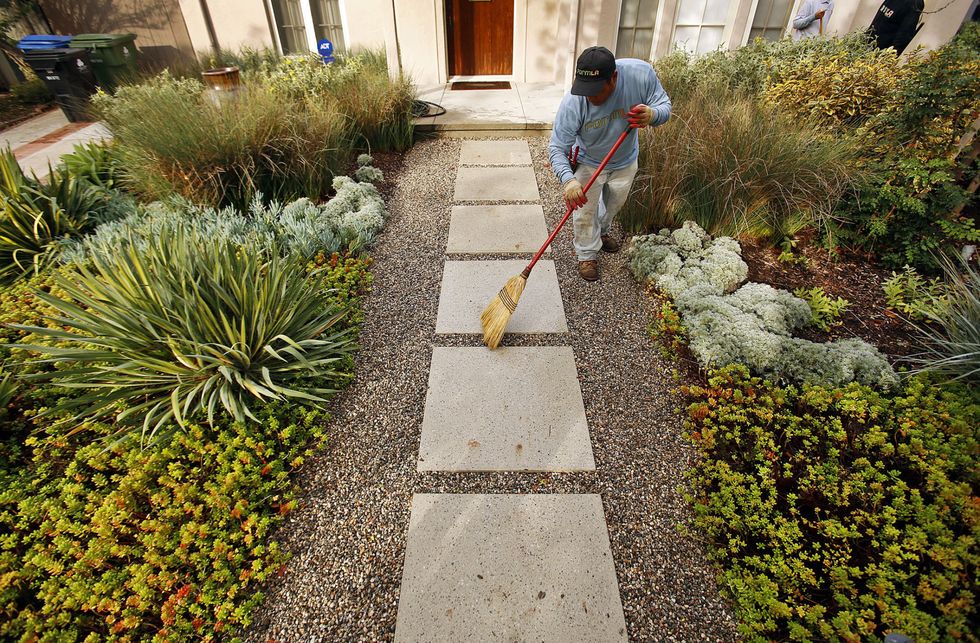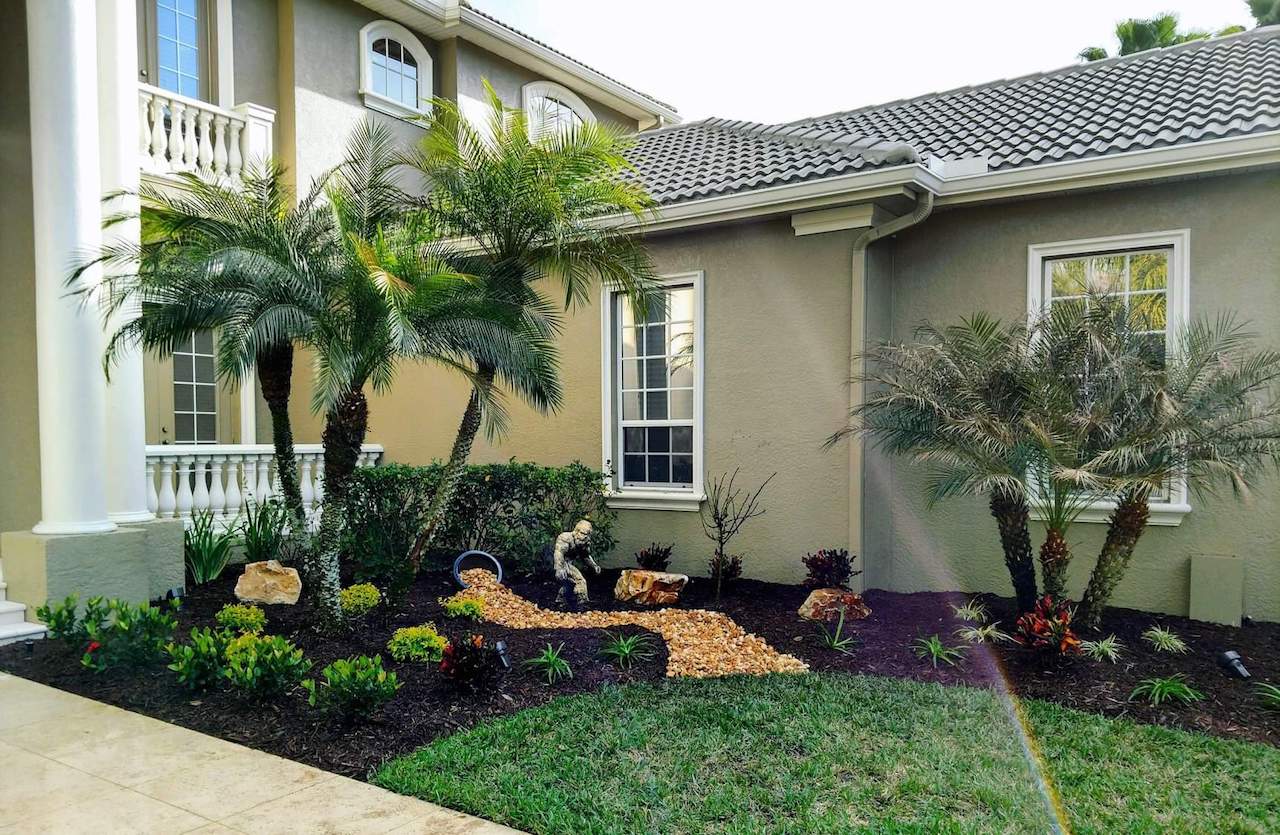Achieve Stunning Results with Cutting-edge Palm Desert Landscaping Designs
A Comprehensive Overview to Designing and Implementing Effective Landscaping Solutions
The art and scientific research of landscaping extend beyond plain aesthetic appeals; they include a thoughtful combination of design concepts, ecological stewardship, and functional application. A detailed overview to efficient landscape design services begins with an extensive understanding of your exterior space, highlighting the importance of unity, percentage, and equilibrium. As we check out sustainable techniques and the option of appropriate vegetation, the effects for biodiversity and area wellness end up being increasingly noticeable. What methods can one utilize to ensure these landscapes not just prosper but likewise thrive attuned to their environments?

Recognizing Landscape Design Principles
One may wonder what foundational aspects add to reliable landscape layout. At its core, successful landscape design hinges on numerous vital principles that guide the setup and choice of aspects within an area. These principles include unity, rhythm, percentage, and equilibrium, each offering to develop an unified outside environment.
Unity describes the cohesive relationship amongst various parts, making certain that they interact aesthetically and functionally. Balance can be attained with balanced or asymmetrical plans, allowing the landscape to feel stable and inviting. Percentage includes comprehending the scale of elements in relationship to each various other and the surrounding atmosphere, advertising visual consistency and comfort.

Assessing Your Outdoor Area
Prior to implementing the principles of landscape layout, a detailed analysis of your exterior room is crucial. This preliminary evaluation helps specify the range of your landscaping task and makes sure that your design lines up with the distinct features of your building. Begin by assessing the measurements of your room, taking specific dimensions to understand the readily available area for various components such as gardens, outdoor patios, and paths.
Following, observe the existing functions of your landscape, including topography, dirt top quality, and drain patterns. These elements substantially influence plant choice and positioning. Furthermore, analyze the sunshine exposure across various areas throughout the day, as this will certainly influence the kinds of plants that grow in your yard.
Take into consideration the microclimates produced by frameworks, trees, and other obstacles, as they can affect temperature and wetness degrees. Finally, make note of any existing plants or hardscape components that you desire to get rid of or retain. This thorough evaluation lays the foundation for a educated and efficient landscaping remedy, ensuring that your layout is not only aesthetically pleasing but lasting and also practical for several years to find.
Lasting Landscape Design Methods
These practices not just promote ecological balance yet likewise improve the useful and aesthetic value of a landscape. Carrying out effective irrigation systems, such as drip watering, reduces water waste and makes certain that plants obtain ample wetness (Palm Desert Landscaping).

One more reliable strategy is the calculated positioning of bushes and trees to supply all-natural windbreaks and color, hence lowering power expenses (Palm Desert Landscaping). Rain yards can look at this website be incorporated right into the landscape design to handle stormwater drainage successfully, filtering pollutants prior to they get in rivers
Picking the Right Plants
Selecting the right plants for your landscape is important to achieving both visual charm and environmental harmony. The procedure begins with an understanding of your regional environment, soil conditions, and the details microenvironments within your landscape. Assessing factors such as sunshine direct exposure, dampness degrees, and existing plants will certainly help you choose plants that thrive in your one-of-a-kind setting.
Think about incorporating indigenous plants, as they are well-adapted to local problems, call for much less maintenance, and assistance neighborhood wild animals. Additionally, choosing a diverse array of species can improve biodiversity while minimizing the threat of disease and parasite outbreaks. It is vital to review the growth practices, flowering periods, and seasonal shades of potential plants to create a vibrant and natural landscape.
Moreover, think of the planned use of the area; for example, if the location will certainly experience high foot website traffic, opt for resilient ground covers. By thoughtfully choosing plants that line up with both your environmental demands and visual goals, you can develop a lasting landscape that not just improves your residential property yet likewise contributes positively to the bordering ecological community.

Application and Maintenance Approaches
As soon as the best plants have been picked for your landscape, the emphasis shifts to reliable execution and continuous maintenance techniques. Successful setup starts with appropriate website prep work, that includes soil testing to identify nutrient degrees and pH, complied with by changing the soil as needed. Meticulously prepare plants according to their growth habits and light demands, making sure adequate spacing to promote healthy growth.
Irrigation is an essential element of application. Establish a watering routine that considers the certain needs of each plant varieties, adjusting for seasonal adjustments. Using drip watering systems can enhance water effectiveness and minimize drainage.
Maintenance strategies have to be applied to guarantee the durability and vigor of your landscape. Routine tasks include weeding, mulching, and pruning to manage growth and stop illness. Fertilization ought to be visit this site conducted based upon dirt examinations, providing the necessary nutrients without over-fertilizing.
Monitoring for illness and insects is crucial; early discovery can stop substantial damages. Finally, seasonal changes to upkeep routines, such as preparing and winterizing perennials for spring growth, will make certain that your landscape remains healthy and balanced and visually attractive year-round.
Final Thought
Successful execution and ongoing upkeep additionally guarantee the long life and vitality of landscapes. By incorporating these elements, landscapes can be changed right into stunning, practical environments that advertise biodiversity and contribute favorably to neighborhood health.
One may wonder what foundational components add to pop over to these guys effective landscape layout. At its core, effective landscape style hinges on a number of crucial concepts that direct the setup and option of elements within a space.Choosing the right plants for your landscape is crucial to accomplishing both aesthetic allure and environmental harmony. It is essential to evaluate the growth habits, blooming periods, and seasonal shades of possible plants to produce a cohesive and vibrant landscape.
When the right plants have actually been selected for your landscape, the emphasis changes to effective application and continuous upkeep techniques.